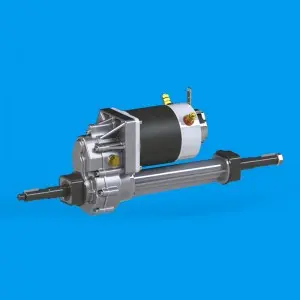When it comes to vehicle components, the transaxle is a critical component and plays a vital role in transmitting power from the engine to the wheels. The transaxle mount, which is responsible for holding the transaxle in place, is equally important. However, there is often debate as to how far the transaxle mount should collapse in the event of a collision or impact. In this blog, we will explore this topic and discuss the factors that determine the ideal slump distance for a transaxle mount.
First, it’s important to understand the purpose of the transaxle mount. Essentially, a transaxle mount is designed to support the transaxle and hold it in place while allowing for some degree of movement and vibration absorption. This is critical to ensuring that power is transferred smoothly and efficiently from the engine to the wheels. However, in the event of a collision or impact, the transaxle mount should be able to collapse to a degree that absorbs energy and protects the transaxle from damage.
The ideal collapse distance of a transaxle mount is determined by a variety of factors, including the material and design of the mount, the weight and size of the transaxle, and the expected level of impact protection. For example, heavier and larger transaxles may require a transaxle mount with a greater collapse distance in order to effectively absorb energy from a collision. Conversely, a smaller and lighter transaxle may require a mount with a smaller slump distance.
Additionally, the materials and design of the transaxle mount play a critical role in determining the ideal collapse distance. For example, a transaxle mount made of softer materials may be able to collapse further to absorb more impact energy. On the other hand, a stiffer and more rigid mount may have a smaller slump distance but provide greater stability and support to the transaxle.
In addition to the material and design of the transaxle mount, the expected level of impact protection also affects the ideal collapse distance. For vehicles designed to withstand high-impact collisions, the transaxle mount may need to collapse further to provide the necessary level of protection to the transaxle. On the other hand, for vehicles used primarily for urban driving and where high-impact collisions are not expected, a smaller collapse distance may be sufficient.
In summary, the ideal collapse distance of a transaxle mount is affected by a variety of factors, including the weight and size of the transaxle, the material and design of the mount, and the expected level of impact protection. The ultimate goal is to find a balance between flexibility and support to ensure transaxle safety and performance. By carefully considering these factors, engineers and manufacturers can determine the most appropriate collapse distance for the transaxle mount, ensuring optimal transaxle protection and functionality under a variety of driving conditions.
Post time: Dec-04-2023


